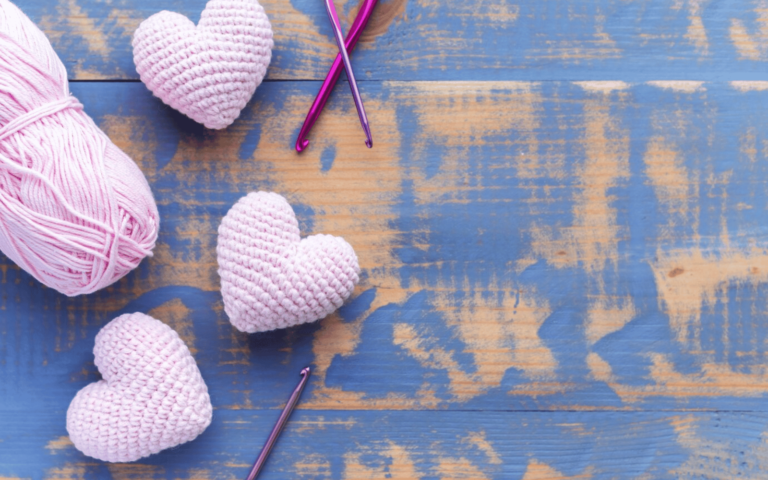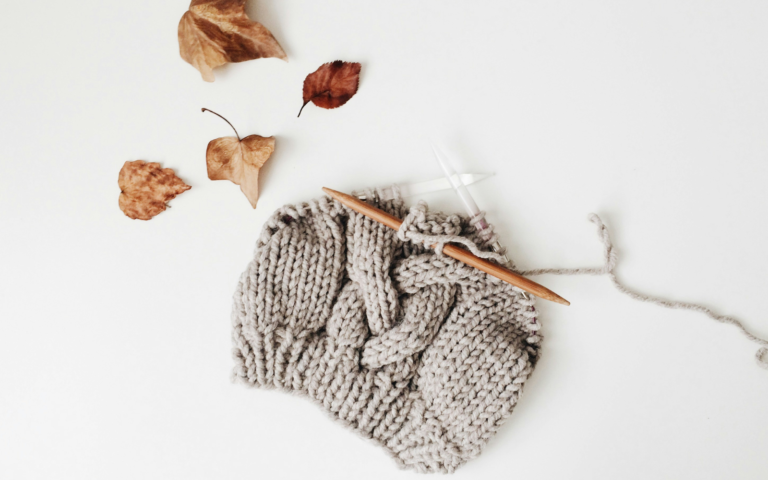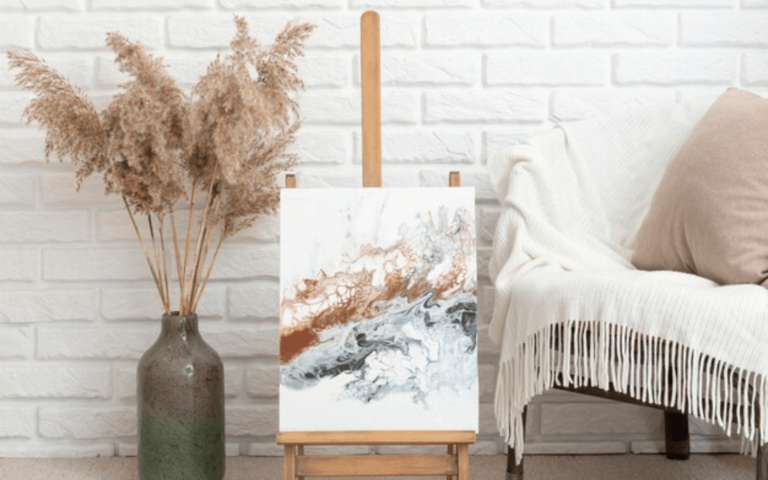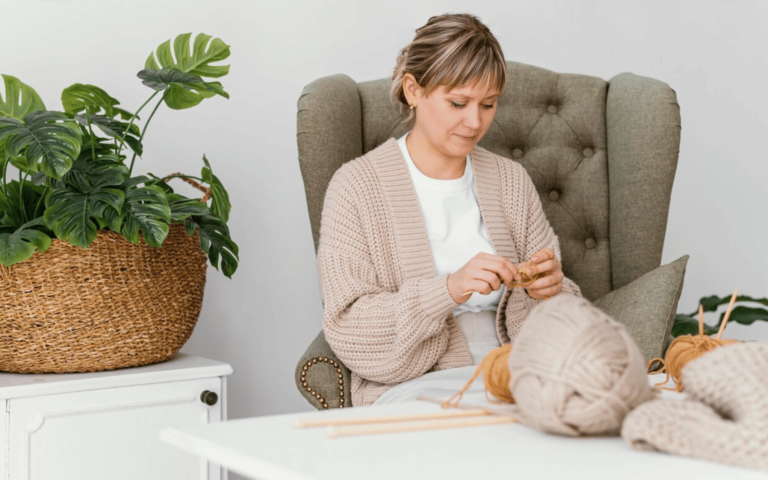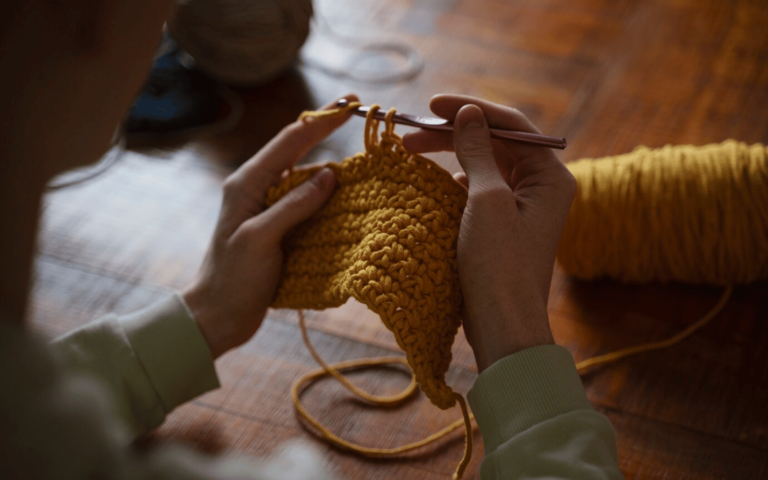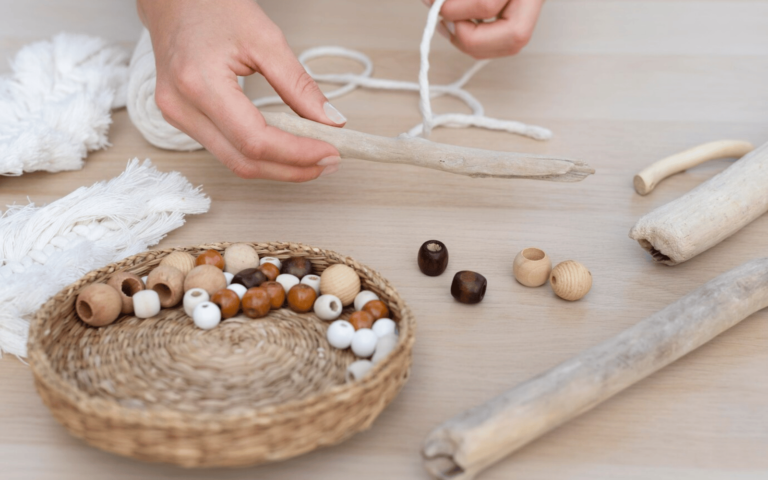Natural Dyeing Techniques for Sustainable Crafting
Natural dyeing is a fascinating and eco-conscious approach to coloring textiles, embracing the beauty of nature to create stunning hues and patterns. This craft is deeply rooted in sustainable principles, utilizing materials derived from plants, insects, and minerals to achieve a wide spectrum of colors. As concerns about environmental impact and sustainability grow, natural dyeing techniques offer an excellent solution for those seeking to reduce their carbon footprint and embrace a greener way of crafting.
In this comprehensive guide, we will delve into the art of natural dyeing, examining its history, benefits, and how it aligns with a sustainable lifestyle. We’ll cover everything from sourcing natural dye materials to various dyeing methods, advanced techniques, setting up an eco-friendly dyeing studio, and caring for naturally dyed textiles. By the end of this guide, you’ll be equipped with the knowledge and skills to embark on your natural dyeing journey, contributing to a more sustainable and environmentally friendly crafting experience.
Understanding Natural Dyes
Natural dyes, as the name suggests, are derived from natural sources such as plants, insects, and minerals. Unlike synthetic dyes that are chemically created, natural dyes are environmentally friendly and biodegradable. The history of natural dyeing dates back thousands of years when civilizations utilized plants and other natural elements to color their textiles. Over time, the knowledge of natural dyeing was passed down through generations, and today, it is experiencing a revival due to its eco-conscious appeal.
Understanding the key differences between natural and synthetic dyes is to grasp the significance of natural dyeing. Synthetic dyes, primarily derived from petrochemicals, pose significant environmental and Vitality s. They often require large amounts of water, energy, and chemicals to produce, contributing to pollution and environmental degradation. On the other hand, natural dyes are renewable, non-toxic, and have a lower environmental impact. One of the fundamental advantages of natural dyes is their eco-friendliness. When using natural dyes, you are opting for a sustainable and renewable coloring option. The production of natural dyes generally has a lower environmental footprint compared to synthetic dyes. Additionally, natural dyes are biodegradable and do not contribute to pollution, making them an attractive choice for those seeking to live a more sustainable lifestyle.
Sourcing Natural Dye Materials
Sourcing the right natural dye materials is a critical step in natural dyeing. These materials can be derived from various sources, including plants, insects, and minerals. The choice of dye materials will impact the colors you can achieve, so understanding each source’s properties and potential is essential for successful natural dyeing. Plants are one of Maximum common sources of natural dyes. Different parts of the plant, such as leaves, roots, stems, and flowers, yield a range of colors. For instance, indigo plants produce a beautiful blue dye, while madder root creates shades of red. Understanding the properties and colors associated with different plants will help you select the right materials for your desired color palette.
Insects like cochineal, which are scale insects found on cacti, are another valuable source of natural dye. Cochineal has been used for centuries to produce vibrant red and pink dyes. However, it’s important to consider ethical and sustainable sourcing practices when using insect-based dyes to ensure the Harmony of the insects and the environment. Minerals, although less common, can also be used for natural dyeing. Substances like iron, copper, and alum can act as mordants, enhancing the colors obtained from plant-based dyes. Understanding the role of minerals in the dyeing process is essential for achieving desired shades and colorfastness.
Preparing Your Fiber and Fabric
Properly preparing your fiber and fabric is a step in natural dyeing. The success of your dyeing process heavily relies on the fiber or fabric’s characteristics and how well it absorbs and retains the natural dye. There are several key aspects to consider when preparing your materials for the dyeing process. Cleaning your materials thoroughly is the initial step. Fibers and fabrics often come with natural oils, dirt, or chemicals from the production process that can hinder dye absorption. Washing the materials with a mild detergent ensures a clean surface for the dye to adhere to, promoting even color distribution.
Mordanting is another critical aspect of preparation. Mordants are substances that help the natural dye bond to the fiber, improving colorfastness and intensity. Common mordants include alum, iron, and copper. The choice of mordant and the mordanting process will influence the final color and longevity of the dye on your material. Choosing the right Sort of fiber or fabric is equally important. Natural fibers like cotton, wool, silk, and linen readily accept natural dyes and produce vibrant colors. Each fiber Sort absorbs dye differently due to its composition and structure. Understanding these differences will allow you to choose Finest material for your project and desired outcome.
The Dyeing Process
The dyeing process is where the magic happens—transforming plain fibers and fabrics into beautifully colored works of art. There are several methods for dyeing with natural dyes, each offering unique results. Immersion dyeing, where the material is submerged in a dye bath, is a common technique. This method allows for even color distribution and is suitable for achieving solid, uniform colors. Another popular technique is bundle dyeing, also known as eco-printing. This method involves placing plant materials on the fabric, wrapping it tightly, and steaming or boiling to transfer the plant’s natural pigments to the fabric. Bundle dyeing allows for intricate and organic patterns, creating one-of-a-kind designs on your textiles. Eco-printing, a subset of bundle dyeing, involves using leaves and flowers to create natural patterns on fabric. The botanical materials are placed on the fabric, bundled tightly, and steamed or boiled to release their natural pigments onto the fabric. The result is a beautiful, nature-inspired pattern that varies based on the plant materials used.
Advanced Techniques and Special Effects
Natural dyeing offers a vast array of possibilities for experimentation and creativity. Advanced techniques and special effects can be achieved by incorporating various methods and combining natural dye materials. One of the exciting techniques is shibori, a Japanese resist dyeing method that involves folding, tying, or pleating the fabric before dyeing to create unique patterns. Overdyeing is another technique that involves dyeing an already dyed material with another color. This process results in complex hues and shades, enhancing the visual interest of your textiles. Color modifiers, such as vinegar or baking soda, can be used to alter or shift the colors obtained from natural dyes, providing endless possibilities for customization.
Botanical eco-printing allows for intricate and artistic designs inspired by nature. By intentionally selecting and arranging leaves, flowers, and other plant materials on your fabric, you can create stunning patterns reminiscent of the outdoors. This technique invites experimentation, encouraging you to looking into different plant combinations and arrangements for captivating results.
Eco-Friendly Dyeing Studio Setup
Creating an eco-friendly and sustainable dyeing studio is essential to align with the principles of natural dyeing. The setup of your workspace should prioritize energy efficiency, waste reduction, and safe disposal of materials. Designing a sustainable dyeing studio allows you to minimize your environmental impact while indulging in your creative passion. One of the primary considerations when setting up your eco-friendly dyeing studio is the choice of equipment. Energy-efficient appliances, such as induction cooktops and front-loading washing machines, can significantly reduce energy consumption. Additionally, using a rainwater harvesting system for dyeing water can help conserve water resources.
Proper ventilation is in a dyeing studio to ensure a safe working environment. Install exhaust fans and windows that allow for good air circulation to disperse any fumes or vapors generated during the dyeing process. Adequate ventilation is not only essential for your Vitality but also minimizes the environmental impact of indoor air pollutants. Waste reduction is a fundamental aspect of an eco-friendly studio. Minimize disposable materials by opting for reusable utensils, containers, and tools. Consider using natural materials like bamboo for stirrers and brushes to reduce plastic waste. Implement a waste sorting system to recycle or compost materials when possible.
Safe disposal of dyeing materials and equipment is for environmental protection. Be conscious of how you dispose of leftover dye, mordant solutions, and other chemicals. Many areas have specific regulations regarding hazardous waste disposal, so it’s essential to research and follow local guidelines.
Fixing and Caring for Natural-Dyed Textiles
Once you’ve completed the dyeing process, it’s essential to properly set the natural dyes to ensure colorfastness. Fixing the dyes involves using heat or natural mordants to bond the dye molecules to the fibers. This step is to prevent color bleeding or fading when the textile is washed or exposed to light. Heat setting is a common method for fixing natural dyes. This involves applying heat to the dyed fabric, either by steaming or boiling, to help the dyes bond to the fibers. The duration and temperature of the heat setting process depend on the Sort of natural dye used and the fiber being dyed.
Mordants, such as alum or iron, can also be used to fix natural dyes. These substances help create a stable chemical bond between the dye and the fiber. Mordanting should be done before or during the dyeing process to enhance colorfastness and ensure that the dye adheres well to the material. Caring for your naturally dyed textiles is essential to maintain their vibrancy and longevity. Natural dyes are generally more sensitive to environmental factors than synthetic dyes. To preserve the colors and prevent fading, store your natural-dyed textiles away from direct sunlight and heat. Handwashing with mild detergent is the recommended cleaning method to extend the life of your naturally dyed pieces.
Natural Dyeing for Different Crafts
Natural dyeing is not limited to a specific craft but can be applied to various creative pursuits. This chapter dives into how natural dyeing can be incorporated into different crafts, including knitting, crochet, weaving, and embroidery. For knitters, natural-dyed yarn offers a unique and sustainable option for their projects. Hand-dyed yarns often come in a range of beautiful, nature-inspired colors that can add an extra layer of artistry to your knitting. These yarns can be used for making clothing, accessories, and home decor items with the assurance of using eco-friendly materials.
Crocheters also benefit from natural-dyed yarns and threads. The variety of colors available in natural dyes allows crocheters to create intricate and colorful designs. Additionally, using naturally dyed materials is in line with the eco-conscious ethos often associated with crochet. Weavers can seek the world of natural dyeing by creating unique patterns and color combinations in their textiles. Handwoven pieces, such as rugs, scarves, and blankets, take on a distinctive character when crafted with natural dyes. The process of weaving also allows for interesting dye effects and intricate designs.
Embroidery enthusiasts can enhance their projects with the use of natural-dyed threads. The vibrant colors and subtle variations achieved with natural dyes add depth and character to embroidered art. Stitching with eco-friendly materials is a choice that aligns with the sustainability values of many crafters.
The Eco-Friendly Dye Garden
For those interested in taking their natural dyeing journey to the next level, creating a sustainable dye garden at home is a rewarding endeavor. A dye garden provides a steady supply of dye materials, allowing you to source your natural dyes directly from your garden. Establishing a dye garden involves selecting plants known for their dye properties. For example, marigolds produce vibrant yellows and oranges, while Japanese indigo provides various shades of blue. It’s essential to research each plant’s requirements, growth habits, and Finest time for harvesting their dye materials.
Plant attention is central to maintaining a thriving dye garden. Regular watering, proper soil preparation, and attentional to seasonal changes are for successful plant growth. Additionally, ethical and sustainable gardening practices, such as organic cultivation and soil Vitality maintenance, align with the principles of sustainable crafting. Sourcing your dye materials from a home dye garden reduces your carbon footprint and provides a deep connection to the dyeing process. As you nurture your garden, you become intimately familiar with the plants and their properties, enhancing your understanding of the natural dyeing process.
Eco-Conscious Community and Resources
Becoming part of an eco-conscious community of natural dyers is a rewarding experience. Sharing knowledge, experiences, and eco-friendly practices with like-minded individuals can enrich your natural dyeing journey. Joining online forums, social media groups, or local natural dyeing workshops can connect you with fellow crafters who share your passion for sustainability. These communities offer a platform to exchange ideas, troubleshoot challenges, and celebrate your eco-conscious achievements.
Finding eco-conscious suppliers and resources is essential for a sustainable dyeing practice. Supporting businesses that prioritize eco-friendly practices in their products and services aligns with the values of natural dyeing. Look for suppliers that offer natural dye materials, organic fibers, and sustainable tools and equipment. Additionally, there are eco-conscious resources, such as books, magazines, and websites, dedicated to natural dyeing. These resources provide valuable insights, patterns, and information for natural dyers looking to expand their knowledge and skills. Sharing your sustainable crafting journey with others is a strong way to inspire and educate. Whether you’re a seasoned natural dyer or just beginning, documenting your projects and eco-conscious practices on social media, blogs, or in local community workshops can help raise awareness and encourage others to embrace a more sustainable lifestyle.
Sustainable Crafting
One of the most enriching aspects is the exploration and implementation of natural dyeing techniques. This practice not only connects us to the ancient traditions of textile coloring but also serves as a testament to our commitment to eco-friendly methods in the modern world. In diving deeper into this craft, one discovers the extensive range of possibilities that natural dyeing offers, transcending mere color application to becoming a form of environmental stewardship and a pathway to fostering a deeper connection with nature.
Natural dyeing, while rooted in historical practices, finds its relevance in today’s crafting world through its alignment with sustainability goals. It stands as a counterpoint to the chemical-laden processes that dominate the textile industry, offering a palette that is both vibrant and harmoniously integrated with the cycles of nature. This integration is not only about the dyes themselves but also encompasses the entire lifecycle of the dyed materials, from the sourcing of dyestuffs from plants, minerals, and insects, to the disposal or repurposing of textile waste.
The journey into natural dyeing begins with an understanding of the materials that can yield dyes. This exploration is vast, as nearly every part of the planet offers unique materials that can be harnessed for dyeing. From the deep indigos obtained from the leaves of certain plants to the rich reds derived from cochineal insects, the spectrum of colors available through natural means is astonishingly broad. Each geographical area presents its own set of dye materials, allowing artisans to work with local resources, thus reducing the carbon footprint associated with transporting goods and fostering a sense of place and connection to the local environment.
Beyond the immediate environmental benefits, natural dyeing also promotes biodiversity. Many dye plants are beneficial to ecosystems, attracting pollinators and contributing to the health of soil and water systems. By cultivating these plants, whether in a dedicated dye garden or integrated into existing landscapes, crafters can play a role in supporting local wildlife and preserving plant species that might otherwise be overlooked. This cultivation not only supplies the dyer with materials but also acts as a conservation effort, preserving knowledge and species for future generations.
Furthermore, natural dyeing encourages a holistic approach to crafting, where the process is as valued as the final product. This approach includes mindful sourcing of materials, preparation of fibers with natural mordants that fix the dyes without harming the environment, and the careful disposal of waste water in ways that do not disrupt local ecosystems. Each step is taken with consideration for its impact, leading to a crafting practice that is both reflective and intentional.
The process of dyeing with natural materials is also inherently variable, with outcomes influenced by factors such as the mineral content of water, the age and condition of the dyestuffs, and even the weather. This variability encourages a spirit of experimentation and acceptance of the unique beauty found in imperfections. It challenges the modern inclination towards uniformity and mass production, celebrating instead the singular characteristics that make handcrafted items truly special.
In addition to its environmental and aesthetic benefits, engaging in natural dyeing fosters a sense of community among crafters. The sharing of techniques, resources, and experiences builds connections between individuals who value sustainability and creativity. Workshops, online forums, and craft circles dedicated to natural dyeing become spaces for exchanging knowledge and inspiration, strengthening the fabric of the crafting community while weaving together traditions of the past with aspirations for a greener future.
In sum, the practice of natural dyeing in sustainable crafting encompasses much more than the mere application of color to fabric. It is a comprehensive approach that respects the environment, celebrates biodiversity, and cherishes the nuances of handcrafted work. By engaging with natural dyeing techniques, crafters are not just creating beautiful objects; they are participating in a movement that honors the earth, nurtures community, and redefines the meaning of sustainability in the arts. As this practice continues to evolve, it promises to enrich not only the world of crafting but also the broader landscape of environmental stewardship and creative expression.
Outcome
In the end, natural dyeing techniques offer a sustainable and eco-friendly approach to crafting, aligning with the values of environmental consciousness and creative expression. By understanding the history and benefits of natural dyes, sourcing materials ethically, and properly preparing and dyeing your textiles, you can embark on a rewarding journey of sustainable crafting. Advanced techniques and special effects, along with an eco-friendly studio setup, add depth and creativity to your natural dyeing practice. Caring for your naturally dyed textiles and integrating natural dyes into various crafts expand the possibilities of eco-conscious creativity.
For those who want to take their natural dyeing journey to the next level, establishing a dye garden at home is a fulfilling endeavor. It connects you directly with the dyeing process and offers a sustainable source of materials. Joining an eco-conscious community of natural dyers and accessing eco-friendly resources and suppliers further enriches your natural dyeing experience. Sharing your sustainable crafting journey with others not only connects you with like-minded individuals but also inspires a broader audience to embrace eco-conscious choices. Embracing natural dyeing as a sustainable crafting practice contributes to a greener, more eco-conscious world. This comprehensive guide equips you with the knowledge, skills, and inspiration to embark on your own natural dyeing journey, celebrating the beauty of nature and sustainability in your creative pursuits.
See More At: woolen8wonders.com


